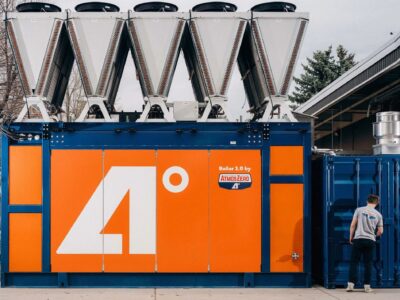Nothing compares to breaking off a chunk of your favorite chocolate bar and letting it melt in your mouth while you savor the sweet harmony of milk and cocoa. Or maybe you prefer the more bitter, subtly sweet taste of dark chocolate? Regardless of your preference, one thing is clear – America has an insatiable sweet tooth. With Halloween and the holidays just around the corner, it’s time we unwrap the origins of our affinity for chocolate.
Chocolate is a massive, $103 billion global industry, and in 2018, the U.S. chocolate candy industry was valued at $22 billion. There are continuing signs that America’s chocolate love affair is only deepening. Nearly 82 percent of U.S adults were expected to eat the sweet treat in 2018–up from around 74 percent in 2008. While chocolate is enjoyed year-round, its dominance is on full display during most major holidays.
In fact, Americans buy 90 million pounds of chocolate during the week of Halloween, and a 2018 National Confectioners Association poll found that chocolate is by far the favorite treat on the holiday. But Halloween isn’t the only holiday where chocolate is king.
A 2018 U.S. Food Market Outlook report authored by Packaged Facts discovered that in terms of sales, Christmas, Easter, and Valentine’s Day actually rank higher than the spooky holiday. According to Packaged Facts, holiday/seasonal chocolates account for 24 percent of total U.S. chocolate candy sales.
The prominence of chocolate during the holidays can be traced back to American candy makers’ efforts to boost fall candy sales. This had been accomplished by 1900 with boxed chocolates for Christmas and chocolate Easter bunnies. But throughout the first few decades of the 20th century, there was no connection between chocolate and Halloween. It wasn’t until the 1950s when trick-or-treating gained popularity, that candy sellers discovered that it could be a sales launchpad.
The other factor behind chocolate’s holiday success is science.
“Chocolate contains a natural, mood-modifying component – PEA, or phenethylamine – a substance that also increases in the brain when we fall in love,” according to Barry Callebaut. “Eating chocolate actually produces similar brain chemistry to that of being in love. Chocolate is a true aphrodisiac by virtue of its smell, taste, and feel. Just think of the joy of receiving a nicely wrapped box of chocolates.” With the holidays being a time for togetherness and showing affection, it’s hard to think of a better gift than a box of delicious chocolates.
Chocolate dates back thousands of years to the Mayans who had an admiration for the product and believed to have learned of cacao from the Olmecs, according to History. “Mayan chocolate was thick and frothy and often combined with chili peppers, honey or water,” ingredients that many households regularly consumed, History explains. The Aztecs also drank chocolate beverages and had an even stronger reverence for chocolate–valuing cacao beans over gold.

By around 1600, Spain began importing chocolate and European countries had traveled to Central America to learn about cacao and brought it home. In 1641 chocolate arrived in Florida on a Spanish ship. By the early 1770s, cocoa beans had become a significant American colony import, enjoyed by many regardless of class.
Daniel Peter – a Swiss chocolatier largely thought to have created milk chocolate – and friend Henri Nestle brought milk chocolate to the mass market in the late 19th century through the Nestle Company, according to History. This paved the way for family companies like Hershey and Mars who took control of the American chocolate industry with their iconic products.
There are several steps that take cacao beans to the chocolate bar:
1. Cacao beans are harvested from their pods and fermented, creating the chocolate flavor. The now-cocoa beans are then bagged and prepared for shipping.
2.The beans are tested, cleaned, and roasted.
3. Roasting separates the cocoa bean shell from the kernel resulting in a cracked bean.
4. The lightweight shell is blown off of the cocoa nibs (cracked bean).
5. A machine grinds the beans to liquefy the cocoa butter and produce liquid chocolate with other ingredients like sugar or milk powder added depending on the recipe.
6. The liquid chocolate and other ingredients are further broken down through a rolling process which “creates heat that melts and distributes the cocoa butter.”
7. The chocolate is modified by adding or removing cocoa butter and possibly adding other ingredients.
8. Then comes conching, a process of continuous kneading of the chocolate which can last hours or days, followed by its tempering and molding into bars.
Today, cacao beans are primarily sourced from West Africa. While large chocolate companies like Hershey and Mars continue to rule the industry, they have evolved to incorporate more socially and environmentally responsible practices. There are now also chocolate makers with companies focused on doing good as well as making good.





